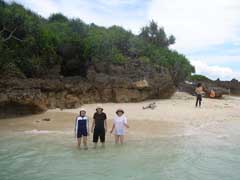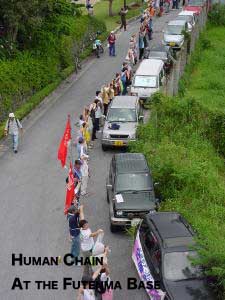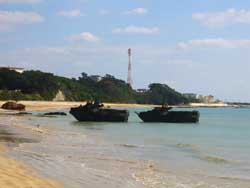
Okinawans and the Dugong
Okinawan history and how Japan has treated Okinawa
Historically, the relationship between the ocean and Okinawans has been tight. The rich ocean gives much to Okinawans and they rely on it to survive.
There once was a time when people thought the Okinawa Dugong extinct. The Japanese government proposed the construction plan of the new US base at Henoko in 1996 and Okinawans began to struggle with another burden. Around that time, the dugong showed themselves to Okinawans again. It was as if the dugong was claiming their rights in the ocean to the pro-base government. Since then, the dugong has been a symbol of the fight against the new US military base. Here is a brief history of Okinawa which might help you to understand the situation.
Okinawa has a long history of occupations.
Okinawa was an independent country until it was invaded by the Satsuma Domain, one of the domains of Tokugawa Japan, in the early 17th century. Okinawans used to have their own language although it is now more like a dialect. Over the period of time, especially after the WWII broke out, the central Japanese government imposed the culture and forced Okinawans to learn Japanese.
During the WWII, Okinawa experienced a severe battle, the Battle of Okinawa in 1945, which lasted more than 2 month. Unlike airstrikes which happened in the main island of Japan, the U.S. soldiers landed on the Okinawa islands. Many civilians died, even had to fight or were forced to commit suicides. The U.S occupation began in 1945 and lasted for 27 years.
In 1972, Okinawa was returned to Japan with the U.S military bases left. Okinawa has 75 percent of the U.S bases in Japan. Okinawa should not be suffering from this much burden any more. Besides the environmental destruction caused by the new airport in Henoko, there are a number of issues around the military bases in Okinawa.
Although SDCC is an environmental group, we understand and concern these issues as well.
In his article, Yoshikawa Hideki, from Okinawa and a staff of SDCC, said,
"For many Okinawans, an increase in the burden of US bases and an associated increase in environmental degradation are simply not acceptable. After all, we are the ones who live in and will continue to live in this environment. We have the responsibility to protect and pass this environment on to future generations. Protesting against the construction plan and protecting the environment of Henoko have merged to become a symbol of Okinawan self-determination, democracy, and healthy development."(from Japan Focus)
SDCC members gathered around the dugong hoping the better future for the dugong and Okinawa. SDCC normally acts outside of Okinawa and spread the acts awareness nationally or internationally. We believe protecting the surviving dugongs pass the hopes to the future.



